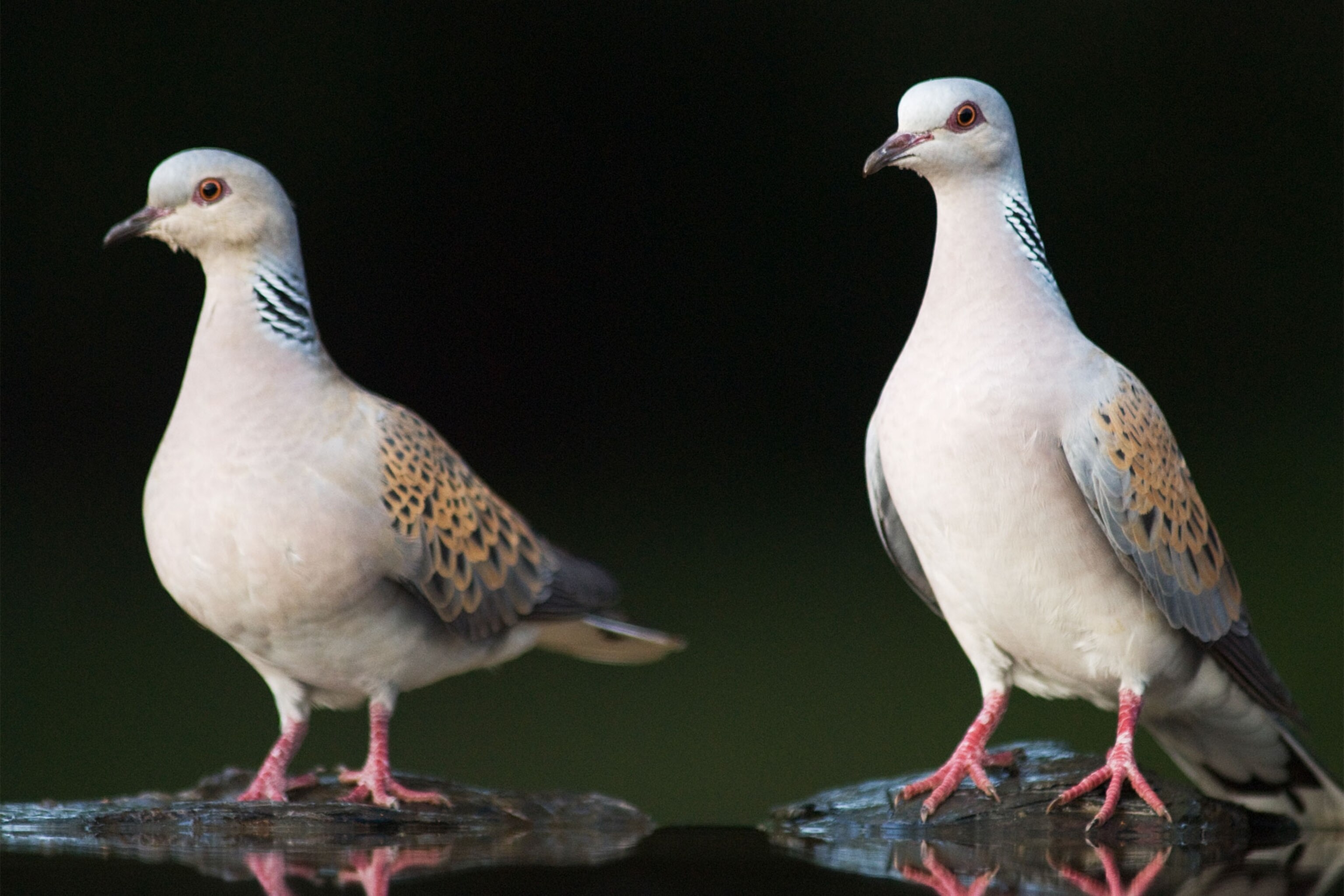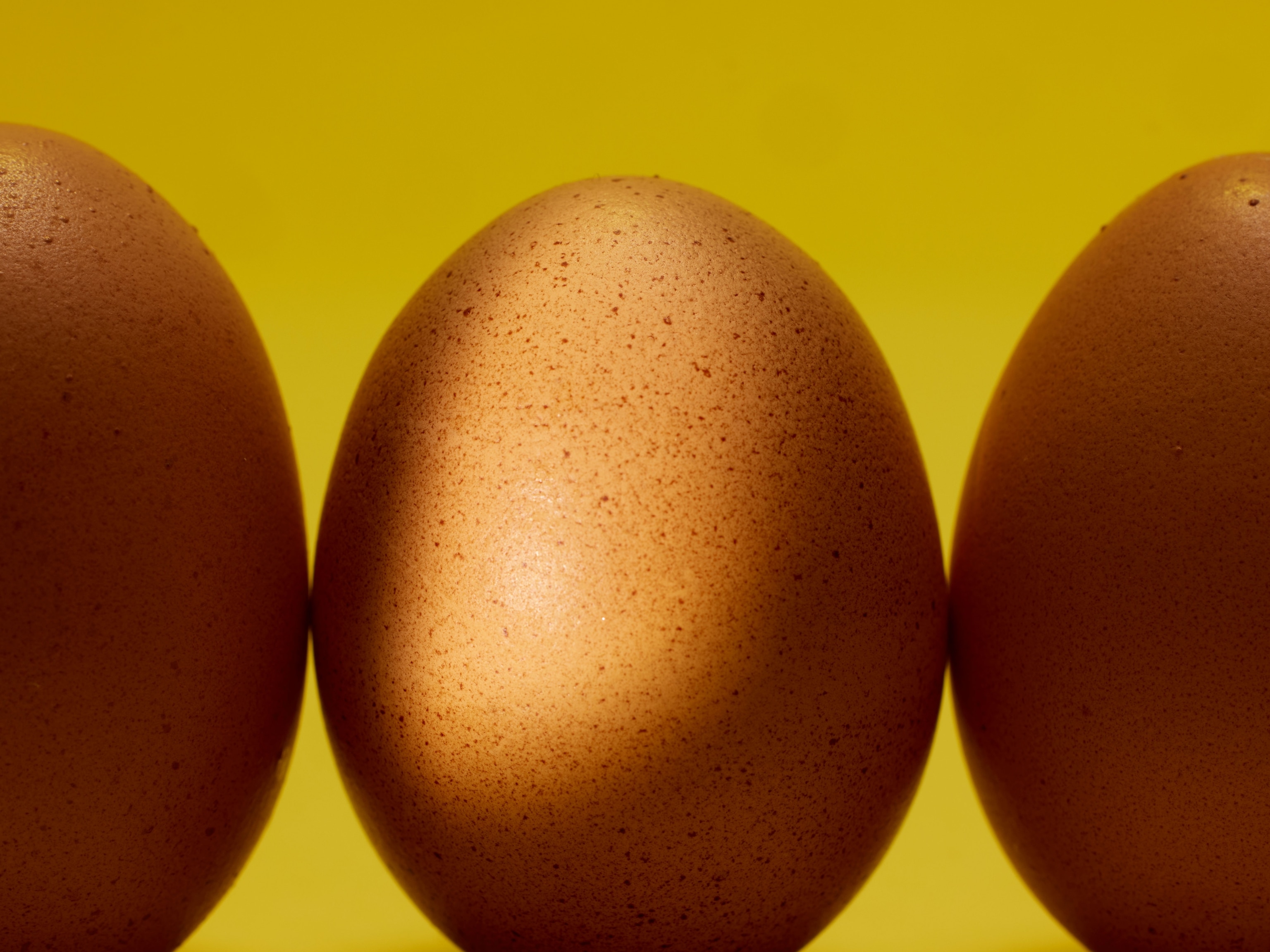





Do Partridges Really Live in Pear Trees?
Here's the truth behind the turtle doves, French hens, and other birds in the famous song "The Twelve Days of Christmas."
The lucky recipient in the classic Christmas carol "The Twelve Days of Christmas" got 23 birds over the course of the holiday season.
Hopefully they didn’t live in a studio apartment.
In the yuletide spirit, we’re taking a closer look at the birds immortalized in the English folk song, first published around 1780.
Seven Swans A-Swimming
There are eight species of swans worldwide, and the most common species in England is the mute swan. The classy birds, inspirations for European fariytales, are popular exports and are often seen a-swimming in park lakes in North America.
Generally “swans mate for life," and couples have an endearing "habit of swimming side-by-side," says J.V. Remsen, curator of birds at the Louisiana State University Museum of Natural Science. (Watch a mute swan "windsurf" across a lake.)
Six Geese A-Laying
It's unknown which geese the song refers to, although several species live in England, including pink-footed geese, barnacle geese, and Canada geese, a non-native species introduced from the U.S.
Geese eggs can provide quite a feast—the eggs of a wild Canada goose, for example, are more than three inches long, while a regular chicken egg is a little over two inches. Domestically a jumbo chicken egg weighs in at 2.5 ounces, while the egg of a Embden goose, a popular domestic breed, is nearly 6 ounces.
Noisy by nature, and with amazing eyesight and hearing, domestic geese have been trained to guard police stations in China. (Related: "Honk if You Think Geese Are Good Guard Dogs.")
Four Colly Birds
Though most of us sing “four calling birds,” the correct word is actually "colly," according to a 2016 blog post by the Library of Congress.
The word colly is an Old English adjective used to describe something black, like coal. So colly birds likely refer to blackbirds, according to the library. Twenty more and you’ve got a pie.
There is, however, a caveat for those of us in North America, Donald Kroodsma, retired ornithologist at the University of Massachusetts, Amherst, says via email.
"The blackbird of English literature is a close relative of our robin,” which are both part of the thrush family, Kroodsma says, whereas North American blackbirds are part of the icterid family.
And if you prefer calling birds, we asked Kroodsma, author of Listening to a Continent Sing: Birdsong By Bicycle From the Atlantic to the Pacific to choose a favorite.
“What's sweeter than a cardinal song?” he says.
Three French Hens
Most of the birds mentioned in the song are wild species, except for the French hen, "which is probably a breed of chicken and hence not wild,” says Kathi Borgmann, an ornithologist at the Cornell Lab of Ornithology.
The song may refer to the Favorelles chicken, a breed named for the region in France from which they originated in the late 1800s. These large, colorful birds have feathery ear muffs and beards—even the females have beards.
Must be hipster chicks.
Two Turtle Doves
The European turtle dove, a beautiful bird with pink and chestnut colors, is in no way related to turtles, quips Remsen.
Their scientific name is Streptopelia turtur—the latter of which means "turtle" in Latin. “So this is truly a curious situation.”
Hear a European Turtle Dove's Call
Some people believe their reptilian name comes from their call, which makes a "turr, turr" sound.
A Partridge in a Pear Tree
Possibly the most famous avian in the Christmas diddy is the partridge.
To most, a partridge probably brings to mind something like the plump little chukar, a partridge native to Eurasia and introduced to North America as a game bird.
There are 92 known species of partridges, which are relatives of quail and live in grasslands the world over.
Sadly, though, the birds are ground nesters, and not "likely to roost in pear trees," says Michael Ward, avian ecologist at the University of Illinois. (See the world's most unusual Christmas trees.)
Next thing they'll be telling us reindeer don't get air miles.
Have a question about the weird and wild world? Tweet me or find me on Facebook. Weird Animal Question of the Week answers your questions every Saturday.
You May Also Like
Go Further
Animals
- Move over, honeybees—America's 4,000 native bees need a day in the sunMove over, honeybees—America's 4,000 native bees need a day in the sun
- Surveillance Safari: Crowdsourcing an anti-poaching movement in South Africa
- Paid Content
Surveillance Safari: Crowdsourcing an anti-poaching movement in South Africa - Fireflies are nature’s light show at this West Virginia state parkFireflies are nature’s light show at this West Virginia state park
- These are the weird reasons octopuses change shape and colorThese are the weird reasons octopuses change shape and color
- Why young scientists want you to care about 'scary' speciesWhy young scientists want you to care about 'scary' species
Environment
- What rising temperatures in the Gulf of Maine mean for wildlifeWhat rising temperatures in the Gulf of Maine mean for wildlife
- He’s called ‘omacha,’ a dolphin that transforms into a man. Why?He’s called ‘omacha,’ a dolphin that transforms into a man. Why?
- The northernmost flower living at the top of the worldThe northernmost flower living at the top of the world
- This beautiful floating flower is wreaking havoc on NigeriaThis beautiful floating flower is wreaking havoc on Nigeria
History & Culture
- Scientists find evidence of ancient waterway beside Egypt’s pyramidsScientists find evidence of ancient waterway beside Egypt’s pyramids
- This thriving society vanished into thin air. What happened?This thriving society vanished into thin air. What happened?
Science
- Why pickleball is so good for your body and your mindWhy pickleball is so good for your body and your mind
- Extreme heat can be deadly – here’s how to know if you’re at riskExtreme heat can be deadly – here’s how to know if you’re at risk
- Why dopamine drives you to do hard things—even without a rewardWhy dopamine drives you to do hard things—even without a reward
- What will astronauts use to drive across the Moon?What will astronauts use to drive across the Moon?
- Oral contraceptives may help lower the risk of sports injuriesOral contraceptives may help lower the risk of sports injuries
- How stressed are you? Answer these 10 questions to find out.
- Science
How stressed are you? Answer these 10 questions to find out.
Travel
- The ‘Yosemite of South America’ is an adventure playgroundThe ‘Yosemite of South America’ is an adventure playground
- These farmers make it possible for hikers to access Alpine trailsThese farmers make it possible for hikers to access Alpine trails
- A guide to Philadelphia, the US city stepping out of NYC's shadowA guide to Philadelphia, the US city stepping out of NYC's shadow
- How to make perfect pierogi, Poland's famous dumplingsHow to make perfect pierogi, Poland's famous dumplings
- The best long-distance Alpine hike you've never heard ofThe best long-distance Alpine hike you've never heard of




